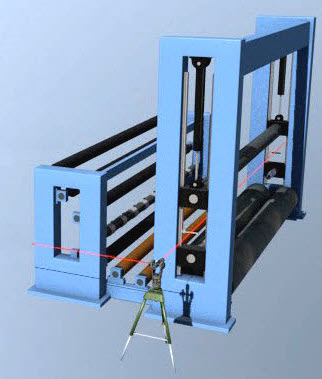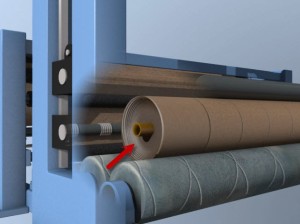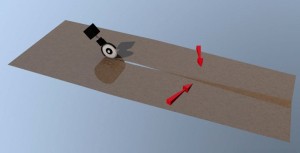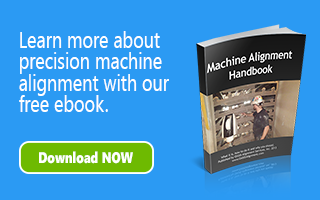In this first post of a series on the precision alignment of winders, we discuss the effects of misalignment on product quality and winder components.
To remain competitive, paper companies have increased the operating speeds of their paper machines. This requires winder speeds to increase at a rapid rate in order to maintain the increased production levels. As winder speeds increase, any misalignment of components has a more detrimental effect on operation, therefore the precision alignment of winders can help to significantly improve total production rates.
Effects of Winder Misalignment
Product Quality
The following examples illustrate how misalignment can adversely affect product quality and contribute to roll defects:
- Misaligned winder components often produce baggy edges, wrinkles, web tracking problems and frequent web breaks.
- Dishing can occur when rider roll, winder drum, or core chuck misalignment causes the product to move incrementally in the axial direction. This continuous movement creates dish-shaped ends on the roll.
- Offsets are steps in the edge of the roll formed by rider roll misalignment that produces non uniform nip loads. Tension variations in the web, causing the web to shift due to the guiding action of the misaligned rolls, can also form offsets.
- Starring may be an indirect result caused by misalignment. Rider roll or way misalignment originally contributes to a soft start. The softer inner layers collapse under the pressure of the more tightly wound outer layers. This produces a star shaped pattern on the end of the roll.
- Wrinkles form if roll misalignment leads to unequal tension in the web. If wrinkling is severe enough, the wrinkles can fold over and cause a permanent crease to form.
- Interweaving is the result of misalignment in the rolls following the slitters. Two adjacent strips of the slit web overlap during winding so that the adjacent rolls intertwine. It is often not possible to separate the rolls and typically, these rolls must be scrapped.
Components
Several component problems can occur from misaligned rolls, drums, ways and drives:
- Vibration can occur near the rider roll and winder drums. The winder drums and rider roll nip the product during windup. Parallel misalignment of the rider roll, drums or core chucks can lead to uneven forces in the nip. These produce the vibration.
- Misalignment of the winder drives can also lead to excessive vibration. This often leads to premature bearing and coupling wear.
- Stresses produced by misaligned rolls lead to excessive wear of bearings, bushings and other mechanical components.
- Binding of the rider roll and core chucks can occur if the ways do not have proper alignment.
In part 2 of this series, we will provide an overview of the alignment inspection process and the optical alignment and/or 3D metrology tooling used to gather data.




Thank for alignment knowledge